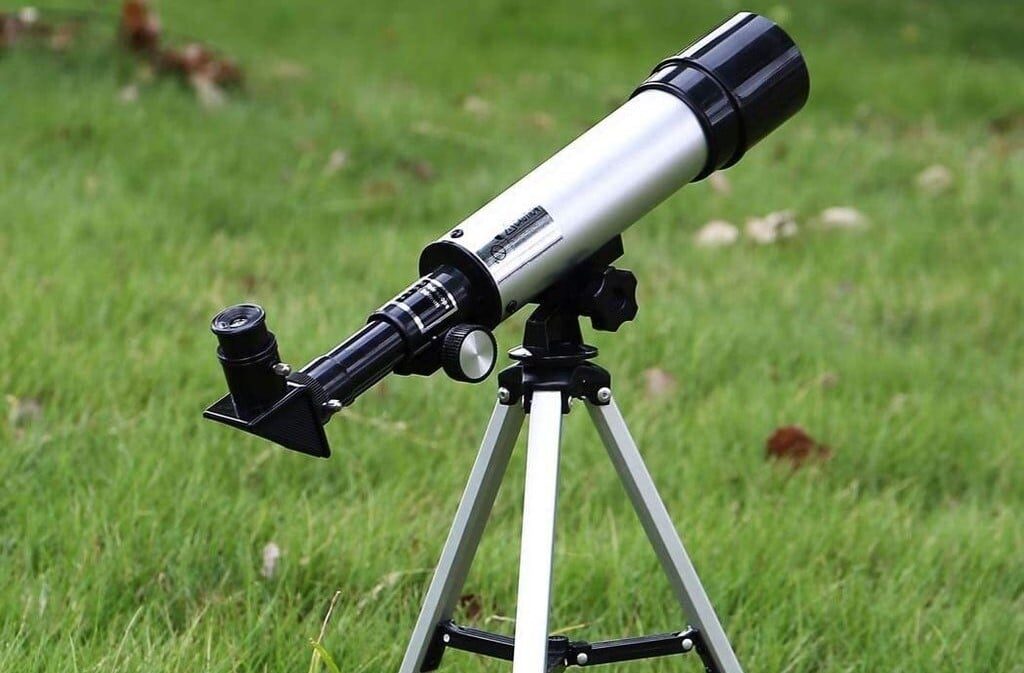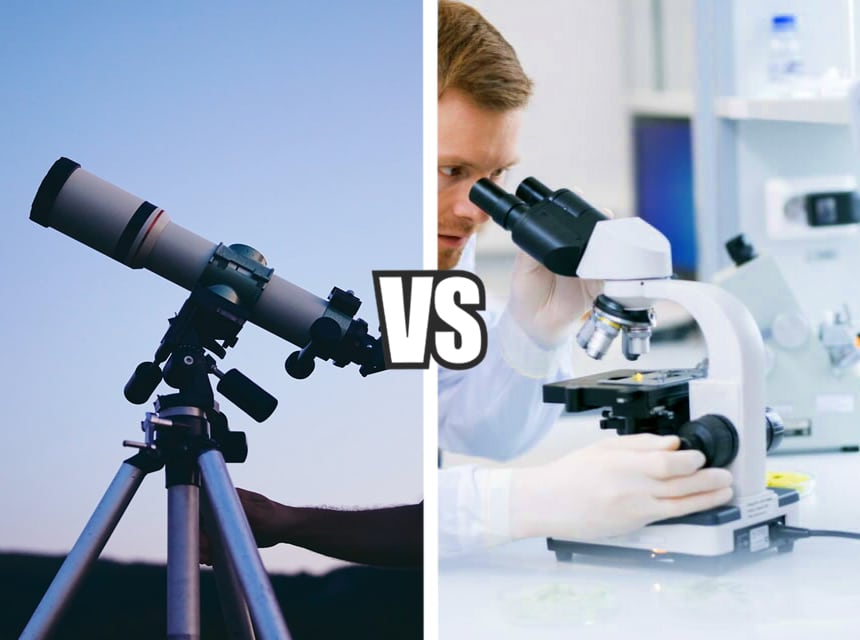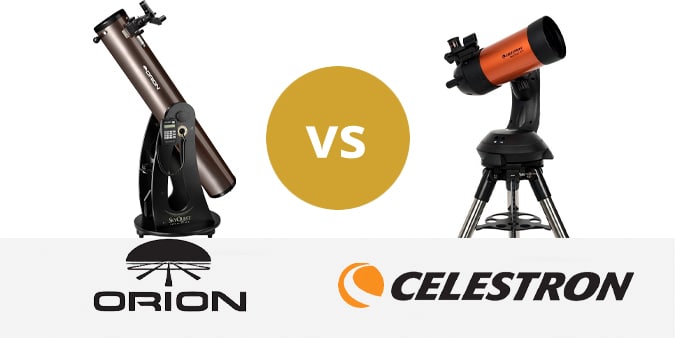

Many people assume that you need thousands of dollars to take an interest in astronomy, but this is not the case. It is possible to take up this interesting hobby without breaking the bank.
Unfortunately, not all top rated telescopes under $200 are as good as described and may not deliver the results you expect. While many people assume that a budget scope will lack features, there are some impressive models on the market.
In our quest to find the best telescope under $200, we evaluated a number of models. We assessed the type of scopes to determine which offers the greatest functionality. We also considered the aperture, focal length, mount, eyepieces and weight, which all impact how easy the scope is to use and the results you can expect.
Other features: 16 – 269 x magnification, StarSense Sky Recognition Technology, smartphone compatibility
One of the benefits of the Celestron StarSense Explorer is that it does not require a costly motorized tripod. Instead, there is a smartphone holder, so you can use apps and smartphone technology to supplement your new telescope.
The StarSense Explorer is available in a number of aperture sizes and all kits come with a smartphone dock, full size tripod, red dot finder and two eyepieces. This allows you to use the telescope with or without a smartphone.
The 22452 uses mirrors rather than lenses to offer a high quality telescope at a reasonable price. In fact, this technology makes this model one of the best reflector telescopes for under $200.
The Explorer Dock is not just a smartphone holder. It is actually an integrated mirror specially designed to work with your smartphone’s camera to gather the star pattern data from the free app. There is a build in shade to keep stray light off the mirror, while spring loaded clamps hold your phone firmly in place.
You can download the app on Android or iOS phones, so you can start exploring the functionality even before your telescope arrives. You can follow the Quick Start tutorials, so once your telescope arrives, you’ll be ready to start stargazing.
Other features: 5 x 24 finderscope, 3x – 1.25” Barlow lens, aluminum coating, 20” optical tube length, aluminum tripod
The Celestron PowerSeeker 127EQ is the perfect telescope for entry-level users. Despite the modest price tag, the Celestron PowerSeeker 127EQ offers a wide field view.
It features a German Equatorial Mount with a slow-motion altitude rod for smooth and accurate pointing and comes with 2 eyepieces (20mm and 4mm), plus a 3x Barlow lens to triple the power of each.
The telescope is compact, lightweight, and portable, making it easy to take to your favorite campsite or dark sky observing site. And with the included BONUS Starry Night Astronomy Software Package, you’ll be able to explore the night sky like never before. For unbeatable customer support, buy from the telescope brand that has been based in California since 1960. You’ll also receive a 2-year warranty and unlimited access to technical support from our team of US-based experts.
You can build on the kit with additional eyepieces and filters, so as your interest in astronomy continues, you can expand the functionality of your new telescope.
Other features: fully coated optics, red-dot viewfinder, 2x Barlow lens, Autostar® Suite Astronomer Edition Software
The Meade Infinity is supplied with an impressive accessory kit. There are three eyepieces; 26 mm, 9 mm and 6.3 mm, a steel tripod with an Alt Azimuth mount and more. This makes it easy to set up your telescope and make adjustments as necessary to locate night sky objects. Despite all of these accessories, the Meade Infinity weighs just 11 pounds.
This makes it one of the best backyard telescopes under $200, but it also offers the flexibility to pack it up and take it on astronomy adventures away from home. This telescope is the ultimate grab and go kit. With its shorter focal length, this scope provides expansive views for bright deep sky objects and bright clusters.
The refractor optical design ensures sharp images that require no collimation. This is a fully accessorized, lightweight scope that is great for night or day, sky or land.
Other features: built-in StarPointer finderscope, 1.7° field of view, Aluminum coating with SiO2, deluxe accessory tray
If you’re looking for a durable and pro designed telescope the Celestron AstroMaster is a great choice. The two included eyepieces offer superb object magnification. There are also fully coated glass optics to protect your eyes.
This scope is highly portable and very easy to assemble. All the apparatus is compact and lightweight. This makes it a great option if you have lots of light pollution at home and will need to venture outdoors to find the perfect viewing spot.
The 76 mm objective lens ensures a clear vision, so you have an amazing astronomy experience. The travel tripod is a manual Azi Azimuth mount, making it a fully height adjustable and sturdy platform for safe use. As an added bonus, all AstroMaster users can receive free access to Starry Night Basic Edition. This Mac and PC compatible astronomy software provides an interactive sky stimulation and is a great way to familiarize yourself with the night sky. You can also download printable maps, research celestial objects and plan your astronomy sessions.
Other features: 5×20 finderscope, 3x Barlow lens, 1-year Limited Warranty
The Barska Star Watcher refractor telescope is a great option to view the sky or take in the scenery. While this is an entry level scope, it comes with everything you need to get started. You’ll find the kit includes a 3x Barlow lens, finder scope, multiple eye pieces and pan head tripod. Despite all of these accessories the Star Watcher weighs just 8 pounds.
The interchangeable eyepieces offer increased viewing power, while the sturdy tripod is engineered with a smooth functioning mount for ease of use.
The Star Watcher is supplied with a carrying case, tripod and Star Watch software. This makes it an all-round great option for beginners, who want to get into the hobby without spending a fortune.
Other features: 3x Barlow lens, red LED observation light, smartphone adaptor
The Cassini C-SS80 is a reflector telescope that can accommodate the G-SPA smartphone adapter kit. This makes it a great choice for those who want to take video or pictures through your telescope optics or use a smartphone app to assist navigation.
Finding objects is easy with the tracker mount that allows for slow motion and precise adjustments. This mount is attached to a fully adjustable, sturdy metal tripod with accessory tray for a stable and safe platform. The tripod also includes a removable LED observation light, which can be mounted to identify eyepieces or removed if you need to read star charts or other materials.
The optical assembly has an 800 mm focal length with 80 mm diameter primary mirror. This combined with the electronic RED DOT finder scope will help you to discover objects without losing the surrounding field of view. The scope is supplied with multiple eyepieces and 3x Barlow lens that triples the power of each of the eyepieces.
While the C-SS80 is more substantial than many of the telescopes on this list, it still weighs a manageable 19 pounds. This may be a little trickier to handle if you need to transport the scope, but it should feel sturdier than all plastic models.
Other features: Quick Release accessory tray, CBI Stellarium CD ROM, G-SPA smartphone adapter
The Galileo SS-80090TR is a reflector telescope that is also compatible with the G-SPA smartphone adapter kit. As we mentioned above, this kit allows you to mount your smartphone for hands free video and pictures and it is compatible with most popular smartphone models.
The SS-80090TR also includes a Tracker mount that offers slow motion horizontal and vertical manual controls. This is attached to a fully adjustable pre-assembled, heavy duty metal tripod with accessory tray, so you can keep your eyepieces and lenses on hand. The accessory tray is also quick release, further enhancing functionality.
Other features of this scope include Helical rack and pinion focusing, a Galileo Electronic Mars Eye finderscope and CBI Stellarium software. All supported by a one-year manufacturer’s warranty.
Other features: 2x Barlow lens, 5×24 finderscope, fully-coated glass optics, Celestron’s Starry Night Basic Edition Software
If you don’t have an ideal spot for stargazing in your yard, the Celestron Travel Scope is a great option. This scope works for terrestrial and celestial viewing without adding too much weight to your kit. The 70 mm lens allows sharper images and there are two eyepieces supplied for increased functionality.
The eyepieces are high quality in 20 mm and 10 mm to provide a detailed look at any celestial objects, in both low and high-power views in daytime or at night.
To make carrying this scope even easier, the Travel Scope is supplied with a handy backpack that makes it easy and safe to carry both the scope and tripod.
As with most Celestron scopes, the Travel Scope is supplied with a copy of Starry Night Basic Edition. This impressive software will help you to plan your stargazing sessions with star maps, and comprehensive user’s guide.
Astronomy can be an interesting hobby, but if you don’t want to break the bank it is possible to buy a decent scope. However, with so many telescope models on the market, it can be tricky to find the best telescope under $200. So, here we’ve assembled a buying guide with features to look for and answers to common questions to help you make a purchase decision.
Telescopes can vary in cost a great deal and while you cannot expect the features of a more expensive scope on a budget model, you can still get a decent package. Many scopes in this price bracket include eyepieces, lenses and other kit that will allow you to immediately get started. You will even find most are supplied with astronomy software, such as the Celestron Travel Scope that has Starry Night basic edition.
There may even be potential to upgrade certain aspects of your telescope, with additional lenses and eyepieces to further enhance the functionality of your scope as you become more confident.
With so many telescopes on the market, it can be tricky to choose the best one for your requirements. So, here we’ll explore the features to consider before you make your final choice.
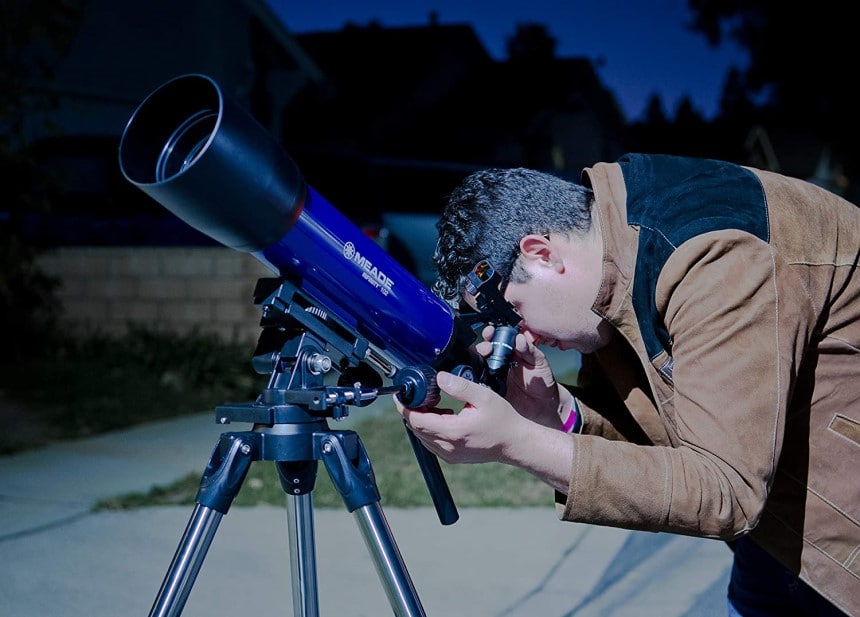
There are three main types of telescopes. Refractor scopes are the type that most people will be familiar with. These have a lens at the front and are considered to be low maintenance. Unfortunately, when you increase the aperture, you quickly increase the cost. However, a refracting telescope can offer great optical quality.
Reflector telescopes feature a mirror at the back that gathers light. This is typically the most inexpensive type of scope, but you will need to adjust the optical alignment, often referred to as collimation. This can be a daunting prospect for novices, but if you gain experience, you will find collimation is quite straightforward.
The final type of telescope is catadioptric or compound telescopes. These use a combination of lenses and mirrors, making them relatively lightweight and compact.
The aperture of your scope will determine the detail of objects. The larger it is, the finer the detail. Ideally, the aperture should be at least 2.8 inches or 70 millimeters.
You should be wary of telescope models that boast extremely high magnification powers. In these cases, the magnification is implausible, since the aperture width impacts the magnification. Generally, the maximum useful magnification will be 50 times the aperture diameter in inches. So, to gain 600x magnification that is seen on some advertisements, you would not only need perfect observation conditions, but a 12-inch aperture!
As we touched on above, useful magnification is directly related to the aperture width. However, it is possible to improve magnification by changing your eyepiece. As more light enters your lens, you’ll have a greater chance of a magnified and clearer view.
Magnification depends on the observing conditions and optical quality, but the scope length can also be a factor. For example, if you have a 6-inch scope it is likely to have a greater and better magnification peak compared to a 4-inch scope.
The magnification range of telescopes do vary, but 50x magnification will be sufficient to look at celestial bodies, while 150x will allow you view all the details on the rings of Saturn, moon of Jupiter and markings of Venus.
In simple terms, a Barlow lens provides a cost-effective way to boost the magnification of scope eyepieces. This lean has been around since the 19th century and it was invented by mathematician, astronomer and optician, Peter Barlow.
Barlow lenses feature a concave lens that is placed between the eyepiece and objective lens on your scope. This increases the magnification of the eyepiece by two or three times.
For example, the Cassini C-SS80 has a 3x Barlow lens. If you use this with a 20mm eyepiece, the 800 mm focal length will be tripled from 40x to 120x.
The focal length of a scope determines the magnification power. As we touched on above, the focal length is divided by the measurement of the eyepiece on the barrel. So, if your scope has a 500 mm focal length and you use a 25 mm eyepiece, your magnification will be 500 divided by 25 or 20x.
Most scopes are supplied with multiple eyepieces, so you can change the magnification, but it is a good idea to choose a scope with a reasonable focal length. The optimum focal length is 700 to 1,000 mm, but this will add to the weight of the scope. If you’re looking for a scope with a more compact design, you may need to compromise with a shorter focal length and purchase additional eyepieces to compensate.
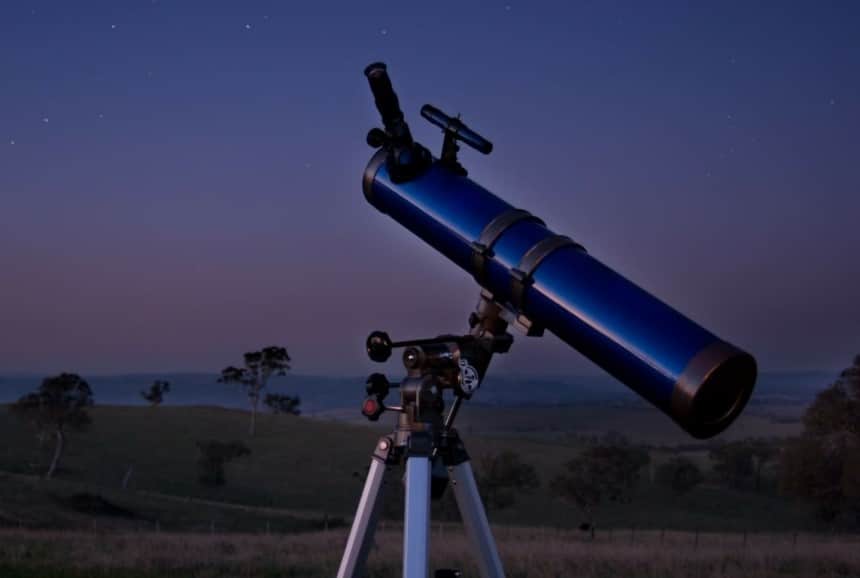
A sturdy support is essential for any telescope, but the type of mount can also impact your scope’s functionality. Many telescope models are supplied with a mount or tripod, but this may not be the highest quality. While a lightweight mount may be sufficient to get started, you may need to upgrade at some point in the future. Additionally, scopes have a mounting block which allows you to use other tripod types. So, it may be possible to use the tripod you use with your current camera. So, before you purchase a new scope, be sure to check the compatibility of the mount. Some scopes do have specific fittings, which are incompatible with some tripods.
Mounts are typically one of two basic types: equatorial or alt-az. Equatorial mounts turn on a single axis, which allows tracking the motion of the sky, while alt-az or altitude azimuth mounts allow movement left and right and up and down. Alt-az mounts are the most simple design and resemble a camera tripod, but they also tend to be cheaper and lighter than an equatorial mount. This can be an important factor if you intend to take your scope and tripod on astronomy adventures outside your yard.
Some mounts also have a small motor, which allows easier tracking of celestial objects. You will need to set the location, time and date, so the mount can auto track. This can be a great feature for beginners who are concerned about trying to use star charts to find objects in the night sky.
Celestial objects in the night sky are actually predictable and depending on where you are, you can observe them on a specific date at a specific time. In the same way a mobile astronomy app can show you sky maps as you point your mobile device up at the sky, some modern telescopes contain computers that allow the scope to find and follow an object in the sky. These smart telescopes are commonly known as GOTO telescopes.
These often feature a handheld control pad to select objects and move the telescope. There may also be an illuminated readout, so you can see where the scope is pointed and view some object information.
There are several benefits of GOTO scopes. Once they are calibrated, they can locate difficult to spot objects. They can also help beginners to learn the night sky. You can use an app or basic star chart as a starting reference and observe all the major stars and celestial bodies or just wander across the sky.
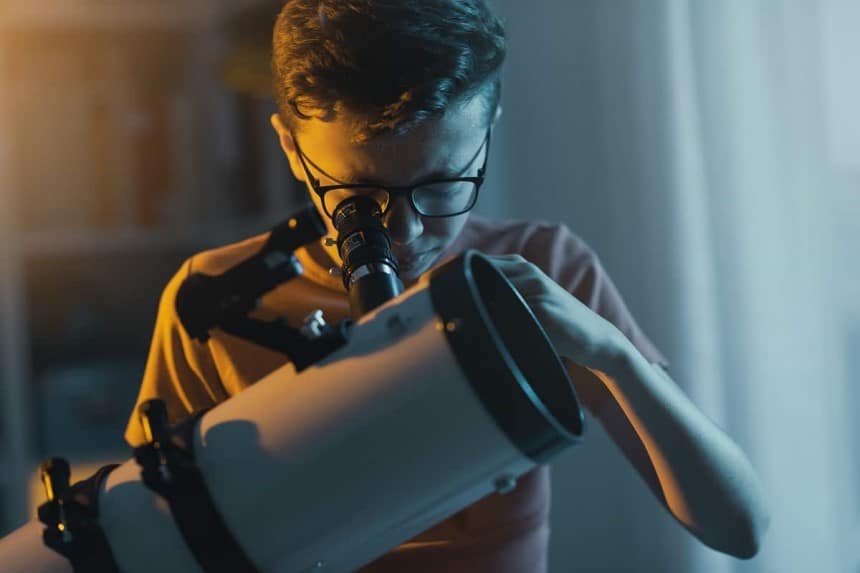
Once you have your telescope all set up, you will need to point it at something. Although it may be easy to spot brighter stars and the moon, without a finder, you will not get the most out of your new scope. Since a scope is only able to magnify a small piece of the night sky, you will need a good finder.
There are three basic types of finder, wide field with no optics, low power and “reflex” finders that project a red dot. Essentially a finder is like a miniature telescope. It piggybacks on the main scope to brighten and magnify the view. This provides a great way to navigate the night sky, but it can bump up the cost of a scope. Fortunately, there are some telescopes under $200 that have impressive finders, such as the Meade Infinity that has a red dot viewfinder or the Celestron AstroMaster, which has a built in StarPointer finder.
If your new scope does have a finder, ensure it is at least 25 mm or 1 inch to provide an effective tool. Otherwise, the finder may be too low powered to offer any use in navigating the sky.
Many of us are not fortunate enough to live in an area with no light pollution. Street lights and other light sources in neighborhoods can make it almost impossible to star gaze. So, you will need to take your scope and tripod out with you to find a good viewing spot.
This creates a need for equipment that is light enough to be portable, but not so lightweight that it is flimsy. After all, you may not be able to find a completely flat surface to set up and the last thing you want is for your scope to take a tumble to the ground if there is a gust of wind.
The ideal weight of a scope will be a matter of personal preference. While some people may have no issues carrying a scope kit that weighs 20 pounds, others may have difficulties and need something lighter. So, think about how far you will need to carry your telescope. Remember that you may not be able to park your car near to a viewing spot and you may face a bit of a hike to escape the light pollution.
Firstly, you will need a focal length of 800 mmm or more with some decent eyepieces. Ideally, a higher power eyepiece will create a greater contrast between the background of the sky and the galaxy, making it easier to see.
You may also find that you’ll need to invest in some filters. Blue filters can boost the contrast, but some light pollution filters can also help.
As you can see, there are some fantastic budget telescopes on the market. From the Meade Infinity, which is supplied with an impressive kit that is ideal for any beginner on a budget to the Orion StarBlast, which arrives pre-assembled and has a red dot finder to help you find objects in the night sky, there are some fantastic models with superb features.
However, the stand out as the best telescope under $200 has to be our editor’s choice, the Celestron StarSense Explorer. This impressive scope has an innovative smart phone holder, so you can use your telescope with apps or take pictures and video. The scope also features StarSense Sky Recognition Technology, so you can start exploring immediately, without breaking the bank with your new hobby.

